Affiliate disclosure: This post may contain affiliate links. Please see our Privacy Policy.
Fromage Blanc is an easy homemade cheese that’s ready in about 24 hours. Perfect for beginners!
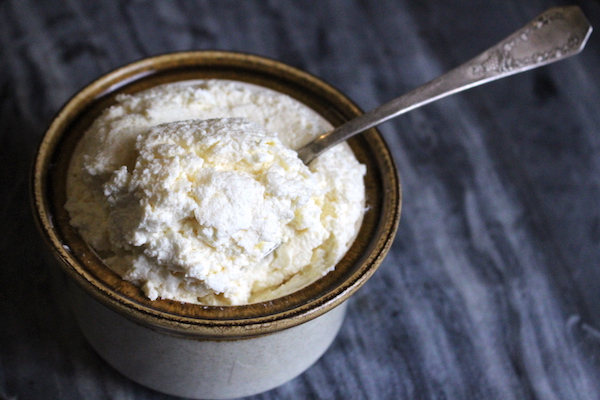
What is Fromage Blanc?
A soft cheese originating that originated in France, Fromage Blanc is cultured from whole milk with a specific starter culture. It has a soft and creamy texture, making it perfect for mixing with herbs and incorporating it into savory spreads and fillings.
Fromage Blanc is generally cultured at room temperature for about 12 hours before being strained through cheesecloth. Left unstrained, the resulting cultured milk is similar to sour cream. Strained for just a few hours and it’ll achieve a cream cheese-like texture, and strained for a full 10-12 hours and it’s most similar to ricotta.
As you can see, Fromage blanc is incredibly versatile. Start to finish, making Fromage Blanc takes less than 24 hours and it has a variety of uses depending on how long it’s strained.
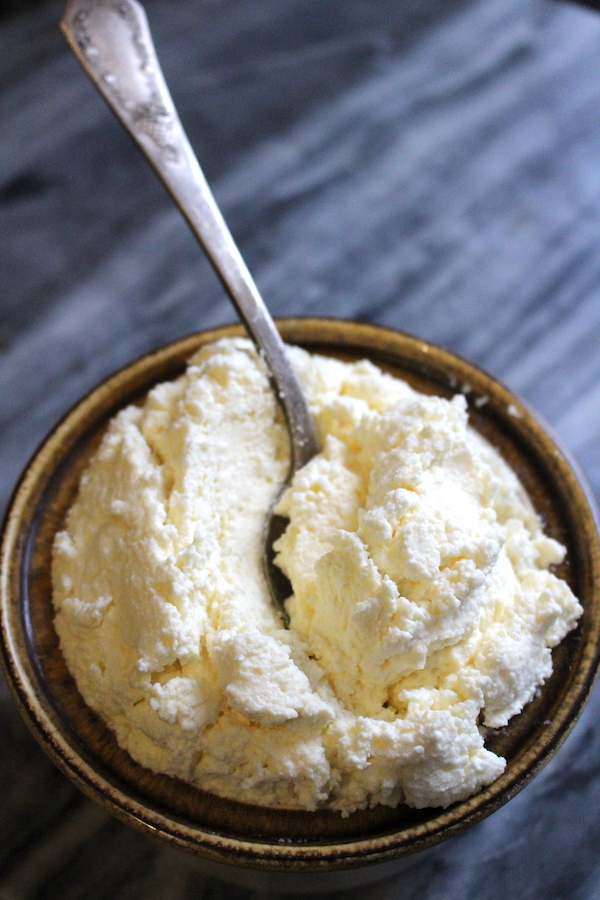
Supplies for Making Fromage Blanc
Cheesemaking equipment can get complicated fast, but Fromage blanc is incredibly simple. You’ll only need a few things:
- Whole Milk (Can be raw or pasteurized, but not ultrapasteurized)
- Fromage Blanc Culture
- A Saucepan
- A Mason Jar (Optional, you can just culture right in the saucepan)
- Fine Cheesecloth (90 Grade)
- Instant Read Digital Thermometer (Optional, but helpful.)
It’s important to choose a fine cheesecloth. Generally, it comes in grades from 50 to 90, with 50 being the cheapest grade with the coarsest weave. You’ll lose a lot of your Fromage blanc through the cloth if you use the cheap stuff, so keep some high-quality 90-grade cheesecloth on hand.
The culture is the hardest thing to find, but my local food co-op has a pretty extensive cheesemaking section. Ask at your local organic grocery, they may surprise you. Cheesemaking cultures are quite small and don’t take up much space. They might be hiding in the corner of the dairy case and you’ve never noticed.
Lacking a local source, Fromage blanc cultures are inexpensive to purchase online, and in case you forget, they actually come with instructions for making Fromage blanc right in the package.
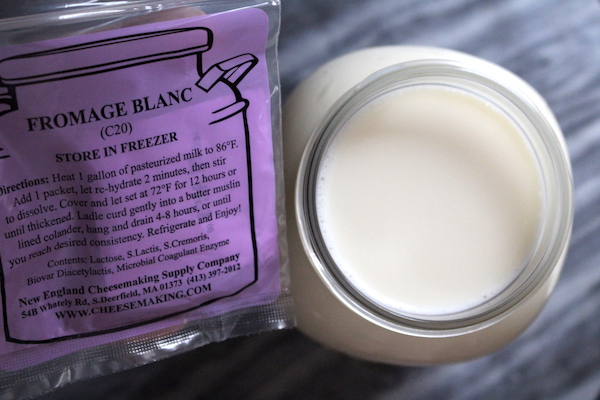
How to Make Fromage Blanc
Making Fromage Blanc is absurdly simple, and the entire instruction sheet will fit on a 2” square of paper included in with the cheese culture. The text is tiny on the packet, so here are the instructions for making Fromage blanc:
“Heat 1 gallon of pasteurized milk to 86 degrees F. Add 1 packet [Fromage Blanc culture], let it re-hydrate 2 minutes, then stir to dissolve. Cover and let set at 72 degrees F for 12 hours or until thickened. Ladle curd gently into a butter muslin lined colander, hang and drain 4 to 8 hours, or until you reach desired consistency. Refrigerate and enjoy!”
Simple instructions, but let me highlight a few things for you and explain the reasoning.
Pasteurized Milk v. Raw Milk ~ The instructions say to use pasteurized milk, but I have used fresh raw cow’s milk without issue. There are other natural cultures in the raw milk, but the concentrated culture you’re adding overwhelms them pretty quickly and the taste is all Fromage Blanc. Do not use ultrapasteurized milk or UHT milk, as the high temps in that process denature the proteins a bit and will prevent your Fromage blanc from thickening properly.
Culturing Temperatures ~ The instructions say to bring it up to 86 F at the start, and then keep the milk at 72 degrees while culturing. While it’s important to be exact about the temperature in many cheesemaking recipes, Fromage blanc is really forgiving. Don’t have a thermometer, no worries.
Warm the milk until it’s warm-ish but not quite body temperature (check with your finger), and then culture at room temperature. Anywhere between 65 and 75 degrees F is ideal, but it’ll still culture outside that range (just slower if colder, and faster with less complex flavor if it’s warmer).
Allow the Culture to Rehydrate ~ It seems trivial, but it’s important to let the culture rehydrate before you stir it in. Try to dust it on top of the milk so it doesn’t clump, and then allow it to rehydrate there before burying it in the liquid milk.
If you stir immediately the culture could just form into one big dry clump and never really get to work on the milk. It’s just two minutes, but it’s an important 2 minutes.
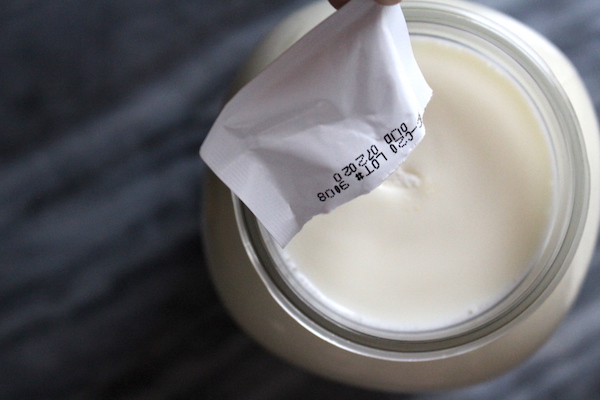
Butter Muslin ~ The instructions are specific that “butter muslin” or fine mesh muslin should be used for straining. The curds are quite small, and they’ll go right through coarse muslin.
Draining Time ~ Draining times for Fromage blanc can make a huge difference in the finished cheese. Unstrained, the cultured milk is like a very mild sour cream. Strained for just a few hours it’ll achieve more of cream cheese-like texture, and strained for longer still it becomes more like ricotta.
Straining a bit longer is fine too. Sometimes I’ll start Fromage Blanc in the morning, culture it all day, and then hang it to strain at night before bed. Sometimes I don’t get to it until late morning and it’s been straining 12-14 hours without issue.
How to Use Fromage Blanc
In general, Fromage Blanc is a mild, soft cheese with all manner of uses. In a pinch, homemade Fromage blanc can stand in for sour cream, goat cheese, cream cheese, cottage cheese or ricotta. That’s great news because if you have a culture packet in the freezer you can save yourself a trip to the grocery store for all those other cultured dairy products. All you need is about 16 hours’ notice before a dinner party to get it started.
Once you’ve made your own cultured soft cheese, here are a few recipes using Fromage blanc:
- Fresh Fruit with Fromage Blanc and Spiced Honey
- Fromage Blanc Tart
- Fromage Blanc Cheesecake
- French Fromage Blanc Cake (Gateau Au Fromage Blanc)
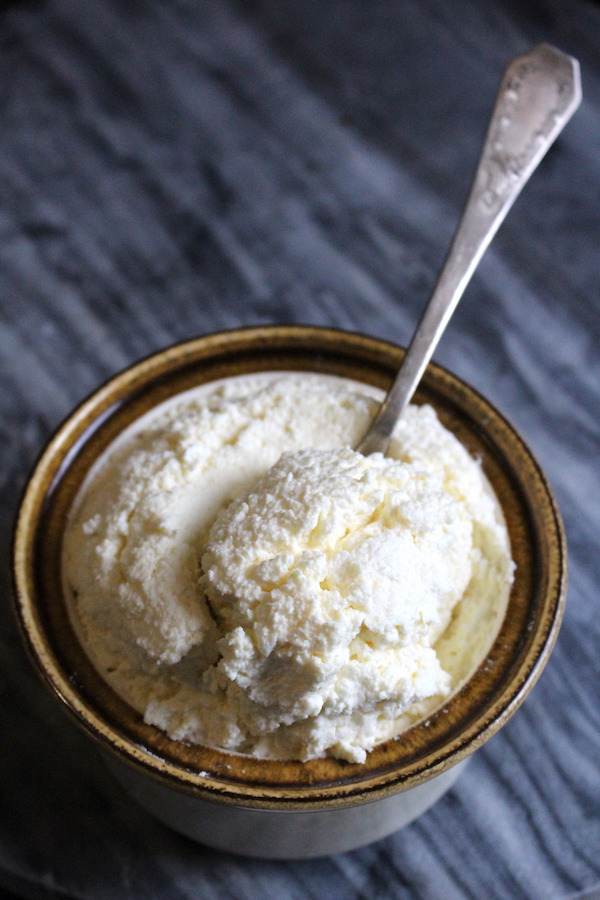
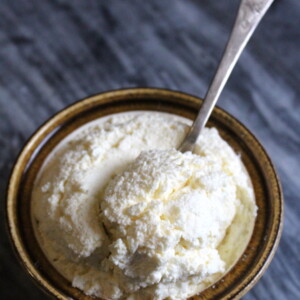
Fromage Blanc
Ingredients
- 1- gallon milk
- Fromage Blanc Starter Culture
Instructions
- Pour one gallon of milk into a saucepan or stockpot.
- Heat to 86 degrees F (30 degrees C)
- Add one packet Fromage blanc culture. Allow the culture to re-hydrate for 2 minutes, then stir to dissolve.
- Cover and let set at room temperature (65 to 75 degrees F) for about 12 hours, or until thickened.
- Pour or ladle the curd into a butter muslin lined colander, hang and drain 4 to 12 hours. Hangtime will depend on your desired consistency.
- Refrigerate and enjoy within 1-2 weeks.
Notes
More Easy Cheesemaking Recipes
Looking for more cheesemaking tutorials? Try any of these:
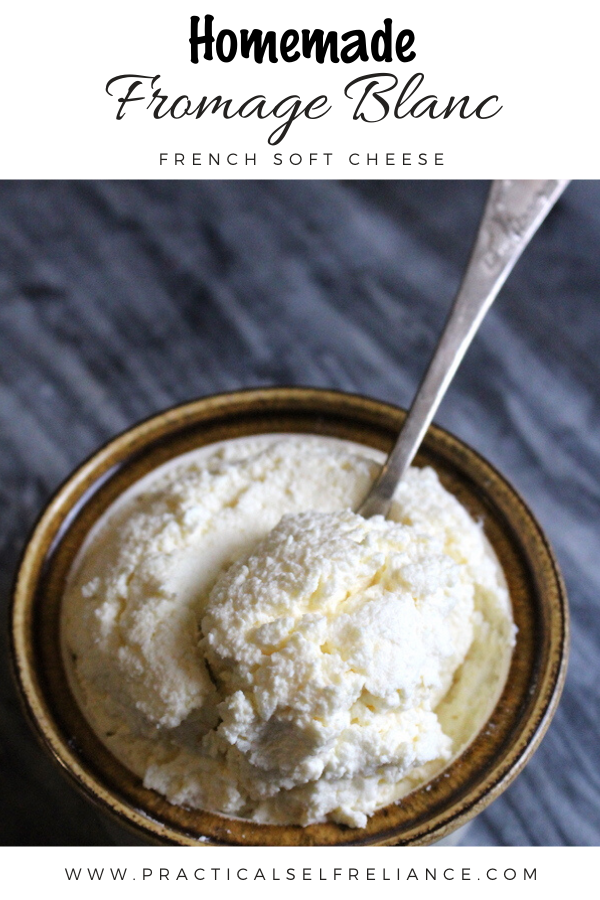
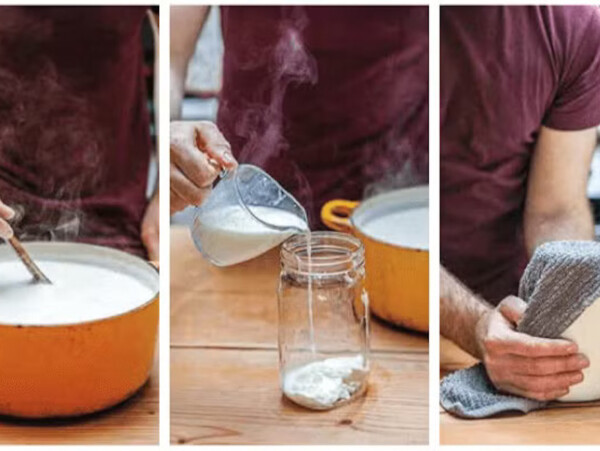
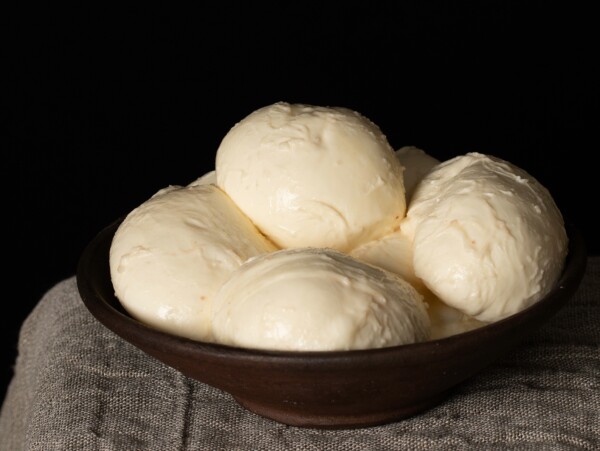
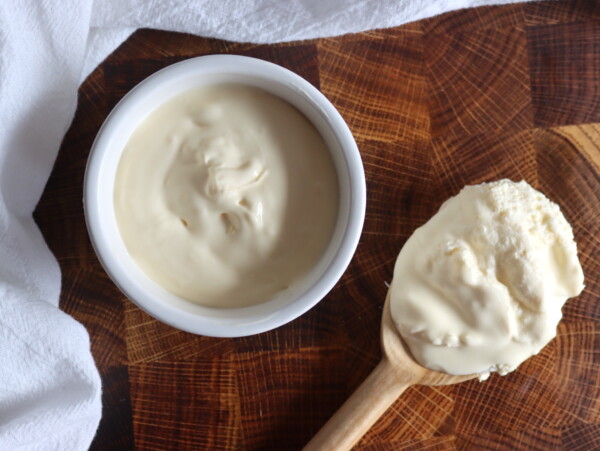
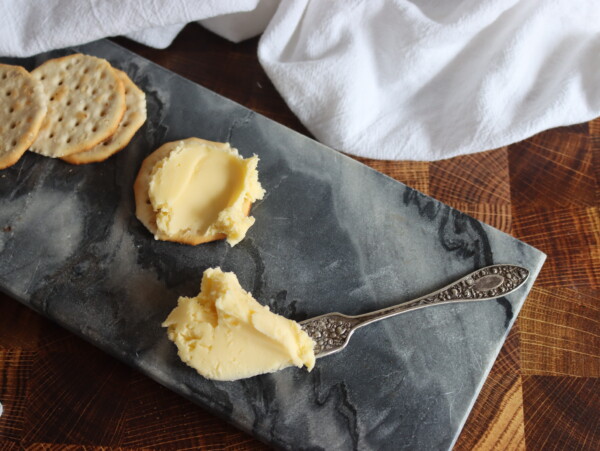
I was just wondering if this would work using goats milk?
Thank you for all the wonderful knowledge you share!
Yes, it should work just fine with goat milk.
Hi! Can some of the cheese be saved and used as a starter vs buying and using the packets of powder every time? Kind of like a sourdough start?
Thank you,
Amber
That’s a good question. In theory it definitely should work just like any other culture I would think but you might just have to do a bit more research and experiment to determine how much culture to use. Let us know if you find a process that works for you.
I am wondering the same thing about the liquid that’s strained out…
I happened to come into your site when searching for Swedish yogurt. I am interested to make your ‘dairy recipes’. I am lactose intolerant so have been buying lactose-free milk. My question is: do I need to use regular milk to make Swedish yogurt and frommage blanc?
Thanks for sharing your knowledge!
Myrna
Cultures for Health indicates that lactose-free milk may not be suitable for culturing. You could always give it a try and see if it works.
Where can you get butter muslin? I have seen recipes that call for it, but can’t ever seem to find any.
Butter muslin is just high-grade cheesecloth. Search for “90 grade cheesecloth” online and you’ll find plenty of options. They have it on amazon, lehmans supply, all manner of other places. I’ve really not found the “good stuff” in stores locally.